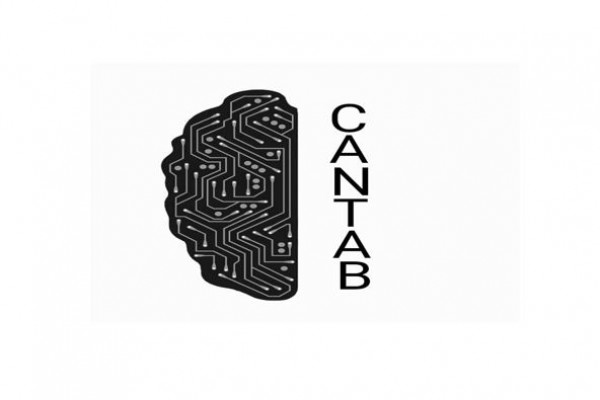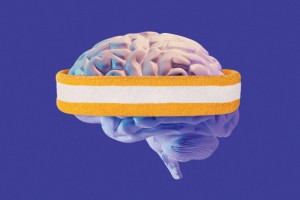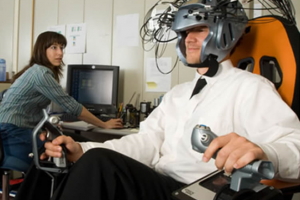Test descriptions
The tests in Cantab Research Suite may be broadly divided into seven main groups:
screening/familiarisation tests
visual memory tests
executive function, working memory and planning tests
attention tests
semantic/verbal memory tests
decision-making and response control tests
social cognition tests
other tests
In the tables below, each test in a group is briefly described. More detailed descriptions of the tests, with approximate administration times for the various modes of the tests, and full instructions for test administration, are given later in this guide in the individual test chapters.
Screening/familiarisation tests
Test name 1. Motor screening (MOT)
Purpose Screens for visual, movement and comprehension
difficulties and can also be used to familiarise the
subject with the CANTAB user interface.
- Big/ Little Circle (BLC)
Tests comprehension, learning and revers
- MOT description
The Motor Screening test (MOT) is a training procedure designed to relax the subject and to introduce them to the computer and touch screen. It should always be given at the beginning of a test session.
It simultaneously screens for difficulties with:
vision
movement
comprehension
and ascertains that the subject can follow simple instructions, as well as familiarising them with the touch screen.
- Big/Little Circle (BLC)
Big/Little Circle (BLC) is primarily a training/screening test that may be used to prepare the subject for the Intra-Extra Dimensional Set Shift (IED) test. Therefore, if both BLC and IED are used in the same battery, BLC should be administered before IED.
BLC description
BLC is a simple test of attention. This visual discrimination test is designed to train a subject to:
follow a simple rule
reverse a rule
Visual memory tests
Test name 1. Delayed Matching to Sample (DMS)
Purpose Tests immediate and delayed perceptual matching
- Paired Associates Learning (PAL)
Assesses episodic memory and learning
- Pattern Recognition Memory (PRM)
Tests visual recognition memory
- Spatial Recognition Memory (SRM)
Assesses spatial recognition memory
- Delayed Matching to Sample (DMS)
DMS is a test of simultaneous and delayed matching to sample. This test is primarily sensitive to damage in the medial temporal lobe area, with some input from the frontal lobes.
- PAL description
The PAL test assesses visual memory and new learning. This test is primarily sensitive to changes in medial temporal lobe functioning.
- PRM description
PRM is a test of visual pattern recognition memory in a 2-choice forced discrimination paradigm. This test is sensitive to dysfunction in medial temporal areas of the brain and relatively insensitive to dysfunction in the frontal lobe.
- SRM description
SRM is a test of spatial recognition memory in a forced-choice paradigm. This test is primarily sensitive to dysfunction in the frontal lobe, and relatively insensitive to temporal lobe damage.
Executive function, working memory and planning tests
Test name 1. Attention Switching Task (AST)
Purpose Assesses cognitive flexibility
- Intra-Extra Dimensional Set Shift (IED)
Assesses rule acquisition and attentional set shifting
- One Touch Stockings of Cambridge (OTS)
Assesses spatial planning
- Stockings of Cambridge (SOC)
Assesses spatial planning and motor control
- Spatial Span (SSP)
Tests working memory capacity
- Spatial Working Memory (SWM)
Assesses working memory and strategy use
- AST description
AST is a test of executive function that provides a measure of cued attentional set-shifting. Response time and errors in cued switching trials are measured over a large number of trials, providing robust outcome measures
- IED description
Intra-Extra Dimensional Set Shift is a test of rule acquisition and reversal. It features:
visual discrimination and attentional set formation
maintenance, shifting and flexibility of attention
This test is primarily sensitive to changes to the fronto-striatal areas of the brain.
- OTS description
OTS is a spatial planning test variant based upon the CANTAB Stockings of Cambridge test. This test gives a measure of frontal lobe function.
- SOC description
SOC is a test of spatial planning and spatial working memory, which gives a measure of frontal lobe function.
- SSP description
SSP is a computerised version of the Corsi Blocks task, assessing working memory capacity. This gives a measure of frontal lobe functioning.
- SWM description
SWM is a test of the subject's ability to retain spatial information and to manipulate remembered items in working memory.
It is a self-ordered task, which also assesses heuristic strategy. This test is a sensitive measure of frontal lobe and ‘executive’ dysfunction.
Attention tests
Test name: 1. Choice Reaction Time (CRT)
Purpose: Measures speed of response in a simple 2-choice paradigm
- Match to Sample Visual Search (MTS)
Tests ability to match visual stimuli and measures reaction and movement time
- Reaction Time (RTI)
Measures speed of response and movement in single and 5-choice paradigms
- Rapid Visual Information Processing (RVP)
Tests visual sustained attention
- Simple Reaction Time (SRT)
Measures speed of response to a single stimulus
Choice Reaction Time (CRT)
CRT description CRT is a 2-choice reaction time test which is similar to the Simple Reaction Time test except that stimulus and response uncertainty are introduced by having two possible stimuli and two possible responses.
MTS description
This is a matching test, with a speed/accuracy trade-off
Reaction Time (RTI)
This task is designed to measure the subject’s speed of response to a visual target where the stimulus is either predictable (simple reaction time) or unpredictable (choice reaction time).
Rapid Visual Information Processing (RVP)
This test is sensitive to dysfunction in the parietal and frontal lobe areas of the brain and is also a sensitive measure of general performance.
RVP description
RVP is a test of visual sustained attention.
Simple Reaction Time (SRT)
SRT description SRT is a test which measures simple reaction time – through delivery of a known stimulus to a known location to elicit a known response. The only uncertainty is with regard to when the stimulus will occur, by having a variable interval between the trial response and the onset of the stimulus for the next trial.
Semantic/verbal memory tests
Test name: 1. Graded Naming Test (GNT)
Purpose: Gives a measure of semantic memory by assessing object naming ability
- Verbal Recognition Memory (VRM)
Assesses free recall, and immediate and delayed recognition memory for verbal information.
Graded Naming Test (GNT)
GNT description The Graded Naming Test, developed by Professor Elizabeth Warrington and Dr Pat McKenna, has been used extensively in cognitive neuropsychology. The test consists of a number of black and white line drawings, ordered with increasing difficulty. This test assesses object-naming ability, but is in addition graded in difficulty to allow for individual differences. This means that it may be able to detect any word-finding difficulty even in those with an extensive naming vocabulary.
Verbal Recognition Memory (VRM)
VRM description The VRM test assesses immediate and delayed memory of verbal information under free recall and forced choice recognition conditions.
In the VRM test, the subject is shown a list of 12 (or 18, depending on the mode) words and then, depending on the mode selected, asked to:
produce (recall) as many of the words as possible immediately following the presentation (all modes)
recognise the words they have seen before from a list of 24 (or 36) words containing the original 12 (or 18) words and 12 (or 18) distractors (not the recall-rapid modes)
following a delay of 20-30 minutes, recognise the words they have seen before from another list of 24 (or 36) words containing the original list and 12 (or 18) new distractors (not the recall-rapid modes)
following a delay of 20-30 minutes, recall as many of the words as possible (delayed recall-rapid modes only).
Decision making and response control tests
Test name 1. Affective Go/No-go (AGN)
Purpose Assesses information processing biases and inhibitory control for positive and negative stimuli.
- Cambridge Gambling Task (CGT)
Assesses impulse control and risk-taking in decision making
- Information Sampling Task (IST)
Tests impulsivity and decision making
- Stop Signal Task (SST)
Gives a measure of response inhibition
Affective Go/No-go (AGN)
AGN description
In the Affective Go/No-go (AGN) test, a series of words is rapidly presented in the centre of the screen. These words fall into three valences:
Positive (for example: joyful, warmth, courage)
Negative (for example: mistake, hopeless, burden)
Neutral (for example: item, pause, element) The subject is given a target valence and asked to press a button when they see a word that matches this valence.
Cambridge Gambling Task (CGT)
CGT description The Cambridge Gambling Task has been developed to assess decision-making and risk-taking behaviour outside a learning context. Relevant information is presented to the subjects ‘up-front’ and there is no need to learn or retrieve information over consecutive trials.
Information Sampling Task (IST)
IST description IST is a task designed to measure pre-decisional processing, where the subject gathers and evaluates information prior to making a decision. Inadequate reflection means that decisions will be made on the basis of less evidence, and, therefore will reduce the accuracy of the eventual decision.
Stop Signal Task (SST)
SST description SST is a classic stop signal response inhibition test, which uses staircase functions to generate an estimate of stop signal reaction time. This test gives a measure of an individual’s ability to inhibit a prepotent response.
Social cognition tests
Test name Emotion Recognition Task (ERT)
Purpose Assesses social cognition by measuring responses to faces with different expressions
- ERT description
The Emotion Recognition task, developed at the University of Bristol by Professor Marcus Munafõ and Dr Ian Penton-Voak, is a task of social cognition which measures the ability to identify emotions in facial expressions. The subject is shown a series of stimuli (90 in total, each shown once in each block) which are computer morphed images derived from the facial features of real individuals displaying specific emotions. For each emotion there are 15 stimuli, ordered such that higher levels are more easily recognisable as displaying that emotion.
Other tests
Test name Questionnaire Task (QUE)
Purpose Enables questionnaires to be used within Cantab Research Suite.
- QUE description
QUE is a task that allows you to give questionnaires to subjects. The responses are recorded in the CANTAB results dataset and can be later analysed on a question by question basis.
Source:
CANTABeclipse Test Administration Guide





Related Posts